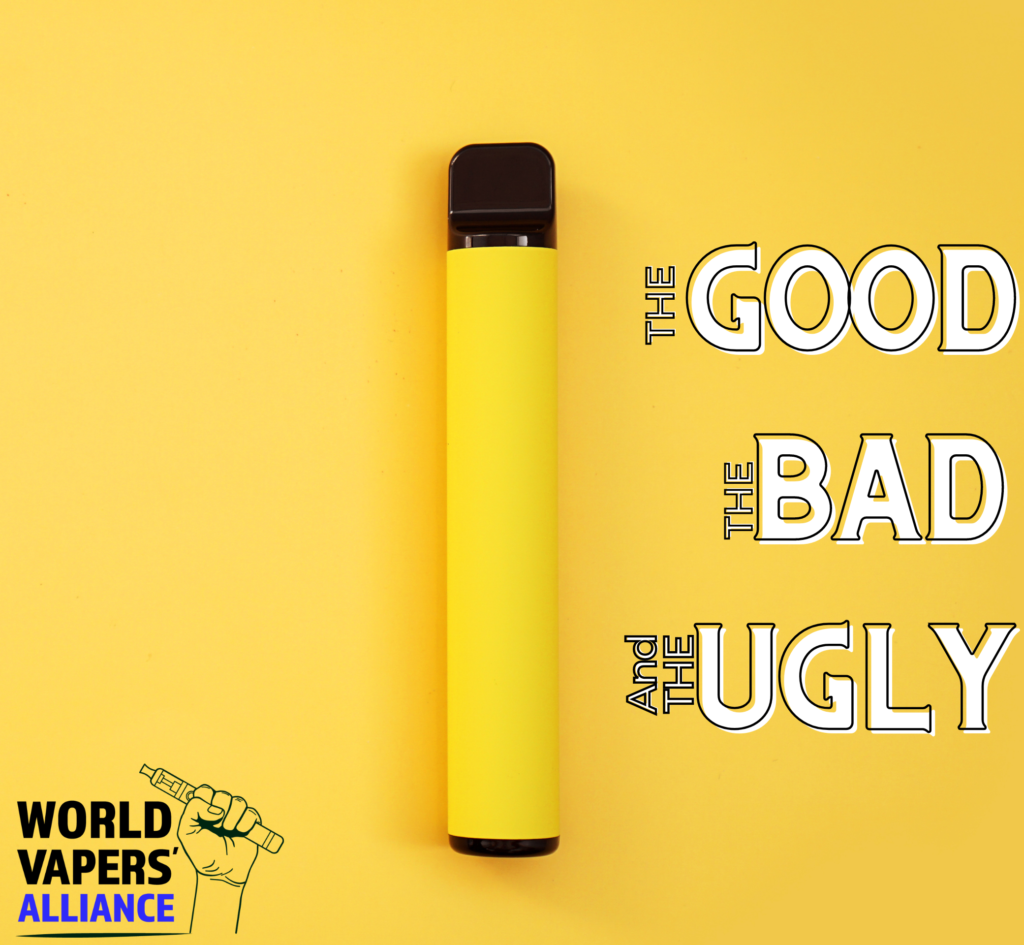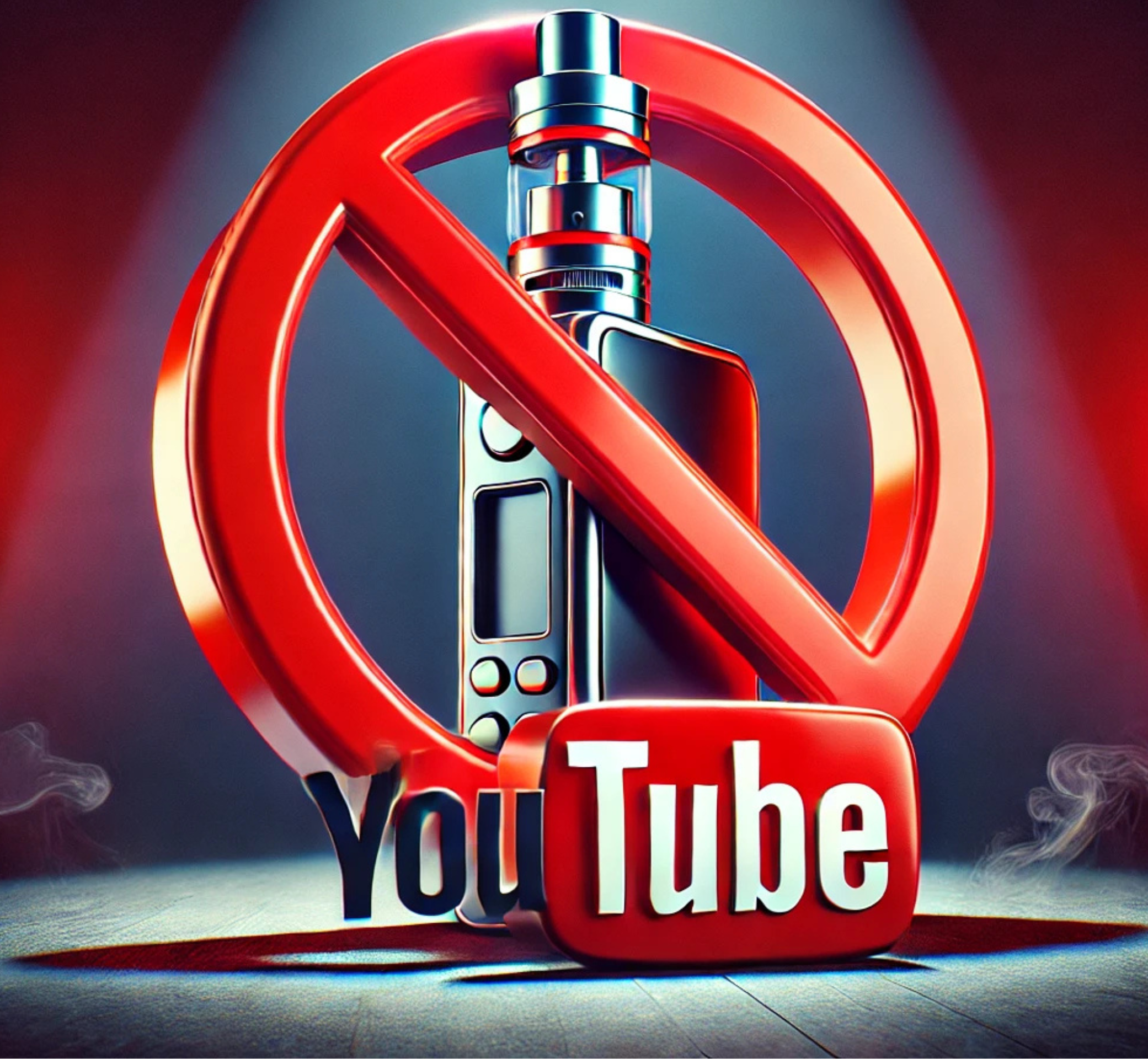Disposable vapes are a heated issue within the vaping community and increasingly within political debates. Deutschland is already discussing a complete ban on disposables and plans to push for an EU-wide ban. I started a Twitter poll last week to get a feeling of what the vaping community thinks about disposables. Obviously, this is not a representative survey, but it gives us a good understanding of the general sentiment. We see a split vote, with 36% of respondents thinking disposables are generally a good thing and 44% evaluating the impact of disposables overall as unfavourable.
Hey #vaping friends! Quick question:
What is your opinion of disposable vapes generally?
Reasons for your vote are welcome below!
— Michael Landl (@LandlMichael) January 10, 2023
Clearly, the poll options are simplistic, but it sparked an interesting discussion about the pros and cons of disposables. Below I summarised the main arguments made for and against the disposables.
The Good:
Easy access for smokers to a less harmful alternative:
The main argument in favour of disposables is how easy they make it for smokers to transition to vaping – a less harmful alternative to smoking.
Disposables are the best first introduction to vaping for someone who smokes. It needs to be as easy and convenient as smoking. They should be sold everywhere cigarettes are sold. They're an easy impulse purchase. They're also great for people with limited mobility.
— Michael Redfearn (@RedfearnMike) January 10, 2023
Knowledge about coils, liquids, or different devices is not needed. That makes it easy for smokers to try it out. Additionally, the investment is minimal in case somebody doesn’t like it — so many incentives for smokers to at least try it out.
I’m very positive. It is messy, but disposables are an easy, low cost, no up-front cost, effective and pleasurable way out of smoking. Making it easy and less intimidating to get started really matters. It may be messy, but it is the end of smoking. And that is big.
— Clive Bates (@Clive_Bates) January 11, 2023
One point Clive Bates makes is fascinating. Disposables are making the first trial more manageable. Vapers often underestimate how intimidating it can be for non-vapers to walk into a shop without any knowledge of vaping — kind of the Subway story in Austria. I don’t know if it is precisely accurate, but the belief is that Subway fails in Austria because people don’t know how it works and don’t want to expose themselves in the restaurant. Therefore, they don’t even enter. I think the same applies to many smokers and vape shops. So disposables have a clear advantage here. You don’t need to go to a particular shop, don’t need any knowledge about the system, and can start immediately.
Easy access for the elderly and people with disabilities:
Another very positive point brought up was the easy access for the elderly and people with disabilities by Colin Mendelsohn and many others.
Good transition model for many former smokers. Ideal for the elderly, disabled, non-technical smokers and very convenient. But there is a greater environmental impact. Best to transition to a refillable model if possible.
— Colin Mendelsohn (@ColinMendelsohn) January 11, 2023
I don't personally use any. I have plenty of older folks who do and rely on them to stay away from smoke. They like the draw, size, weight, easy to use, hideable, flavors all of what I like about my bigger devices. But they should be regulated with fair laws! They have a demand! pic.twitter.com/GZxEcgDZLX
— Southernvaper (@Southernvaper1) January 10, 2023
I agree with this. If I had a grandmother who was a heavy smoker, I wouldn’t give her my open-system vape, which she needs to refill and change coils, but I would give her a disposable vape and ask her to try it instead of her next ten cigarettes. Absolutely no knowledge is needed. I think that is the most significant advantage of disposables, and most people voting for “good thing” would see this outweighing the negatives.
Bottom line: cigarettes are the deadliest product ever, killing millions, annually. They're also the most littered item. Both of these issues demand every possible solution. Disposable vapes dramatically reduce death, disease and the waste. They aren't perfect but they are needed
— Marc and Bernie (@SeismicPirate) January 11, 2023
A disposable vape was a "gateway smoking cessation" device for me. Had it not been for a disposable, I might never have quit smoking, quickly moved on to a refillable device, so, a good thing imo.
— … (@MrsSHaber) January 11, 2023
The Bad
Easy access for adolescents:
Rightly so, many people raised concerns about the usage of disposables by adolescents. It is clear that everything should be done to keep those products out of the hands of underage people.
They get disposed of everywhere they shouldn’t be, they’re not environmentally friendly plus they’re easily accessible to underage kids as unscrupulous store owners sell them to anybody
— Jayceon Johnson (@jayceonnyg) January 10, 2023
If we have learned one thing from history, prohibition doesn’t work. It will encourage a proliferation of the unregulated and dangerous black market, and, counterintuitively, make the products even more fascinating for young people. For me, the way to go is to strictly enforce the rules – namely, sales bans for adolescents – at the point of sales and go after the bad apples harshly.
We also shouldn’t forget that the “youth vaping epidemic” is entirely overblown. Regular use for never-smokers is rare, and as we can see in the US, without this media hype, the occasional use numbers are going down rapidly as well.
Bans would be an easy step for politicians, but not a solution to the problem. As we know, young people who are unhappy with their lives tend to do more risky things in general. Factors such as anxiety, parental smoking habits, peer attitudes, poor schools, and household income, along with other socioeconomic and environmental circumstances, have been proved to be some of the main drivers of youth smoking and vaping. These underlying factors are the ones that should be tackled. In fact, the percentage of 18 years old in the UK using any form of inhaled nicotine has been stable over time, but with vaping increasing and smoking decreasing simultaneously. This suggests that many teenagers who had the conditions likely to make them smokers are instead using a less harmful alternative now. So, suppose politicians and anti-vaping groups really want to help teens: they should campaign for better schools, healthcare systems and economic conditions for their parents to make ends meet (or admit that it is not about young people but just an excuse to ban vaping for everybody.)
Negative environmental impact:
They get disposed of everywhere they shouldn’t be, they’re not environmentally friendly plus they’re easily accessible to underage kids as unscrupulous store owners sell them to anybody
— Jayceon Johnson (@jayceonnyg) January 10, 2023
One of the other main concerns about disposables is their environmental impact, which is a valid and essential point. But it is not an unsolvable problem. We already have recycling systems in place for other products. I am not sure why that shouldn’t be possible for disposables. If disposables are banned and only provided by the black market, there is zero chance that an innovative recycling idea will come up. I would have enough trust in the creativity of consumers and vape shops to develop a working system, especially when disposables are even helping Ukraine fight against Russia. The creativity of the vaping community will come up with solutions for the problem. I am sure about that, but only if we don’t ban them right away.
A new target for anti-vaping proponents and politicians:
Some are concerned that due to the stated problems, disposables will create a new target for all groups who want to go after vaping.
In my opinion, disposables are a bad thing. There are already great reusable #PODsystems on the market, which are small, refillable and rechargeable.
Disposables are absolutely nonsense and will be targeted by the #ANTZ.
It makes the life of THR messaging harder.— DampfFreiheit
(@DampfFreiheit)January 10, 2023
This is clearly the case. The Bloomberg cadre will go after disposables and vaping. The question is, would they stop if disposables were banned? I highly doubt that. They won’t stop until they see a total ban on vaping, and even then, they will find new targets. I wrote about this mission creep Hier
Another example is the perception of nicotine. Instead of celebrating declining numbers of smokers and far fewer deaths, many governments, public health agencies, and anti-smoking activists have been on the hunt for new enemies. They decided to scapegoat nicotine, and as a result, the fight against smoking gradually transformed into a battle against nicotine. Therefore, I don’t believe they will stop if case disposables are banned. They will go after the next thing. For them, it is no longer a fight against smoking and death but a fight against nicotine consumption.
Further problems arise when it comes to safety and quality control of some of the disposables. It is hard to know what’s exactly in the product and often they are of low quality and don’t have enough safety measures, which damages the reputation of vaping.
The Ugly
No matter what you think about disposables, the feeling among participants is that they exist, or at least they are currently so popular, because of the lousy regulation of vaping in general.
We see in many countries complete vaping bans and in many more very restrictive regulations on vaping, which make accessibility of vaping products very difficult. If people like something and governments (quasi) prohibit them, we know that a black market emerges.
In Australia, black market disposables are the only vapes people can get as easily as cigarettes, so I have to say good thing, even though they're selling them to teens and they're horrible for the environment…..
— Sir Didymus (@wooldorsockbatt) January 10, 2023
Unfortunately, the black market will always provide the most easily smuggled and sold products. During alcohol prohibition in the USA, it was hard liquor instead of low-alcohol beer because 500 bottles of vodka will have a higher value than 500 bottles of beer. Another example is the minimum price for alcohol failure in Schottland. The same applies to vaping. It is easier to smuggle a ready-to-go product like disposables than an open system where you need liquids, coils, nicotine shots, etc.
Furthermore, if vape shops face increasing hostility and are increasingly limited in their operations, fewer people will find their way to the experts.
In a perfect world there would be a vape shop in every town where a nice person behind the counter would give them the perfect device disposable or not and support their quit attempt. They wouldn’t be at gas stations where 86 percent of underage sales happen. Location location
— Char owen (@Charowen2010) January 11, 2023
Vape shops should be where smokers get the correct information and help for their transition, but in countries such as Australia, this is increasingly hard.
As a law abiding vape shop in in Australia who is forbidden from selling them, I have to say the opposite, black market sales of nic disposables has seriously impacted our ability to do business. That being said it is great if they help an adult quit smoking
— Steve Douglas (@SteveDo35227481) January 11, 2023
Richard Pruen, from the fantastic “safer nicotine wiki” project, suggests a possible solution for the existing problems: sensible regulation!
As they exist now sadly a bad thing, there needs to be useable recycling and deposit on return, so that the purchase price includes clean up.
They shouldn't be the most popular device, but for those with dexterity issues unable to use refillable devices.
— Richard Pruen (@PruenRichard) January 10, 2023
I think disposables should be treated like other harm-reduction products. What we need is risk-based regulation for all products. Vaping is 95% less harmful than smoking and, therefore, must not be treated the same way as smoking. Less harmful alternatives should be less regulated than the most harmful product on the market – cigarettes. This includes disposable vapes.
Nevertheless, we need solutions for the problems raised. Whether it is including the negative externalities in the price like Richard suggests or some innovative recycling schemes. One thing is for sure, though, the more people can switch from smoking, the better it is for public health. So let’s fight together for sensible regulation without denying the existing problems with different products.
What do you think? Leave your thoughts in the comments below!






